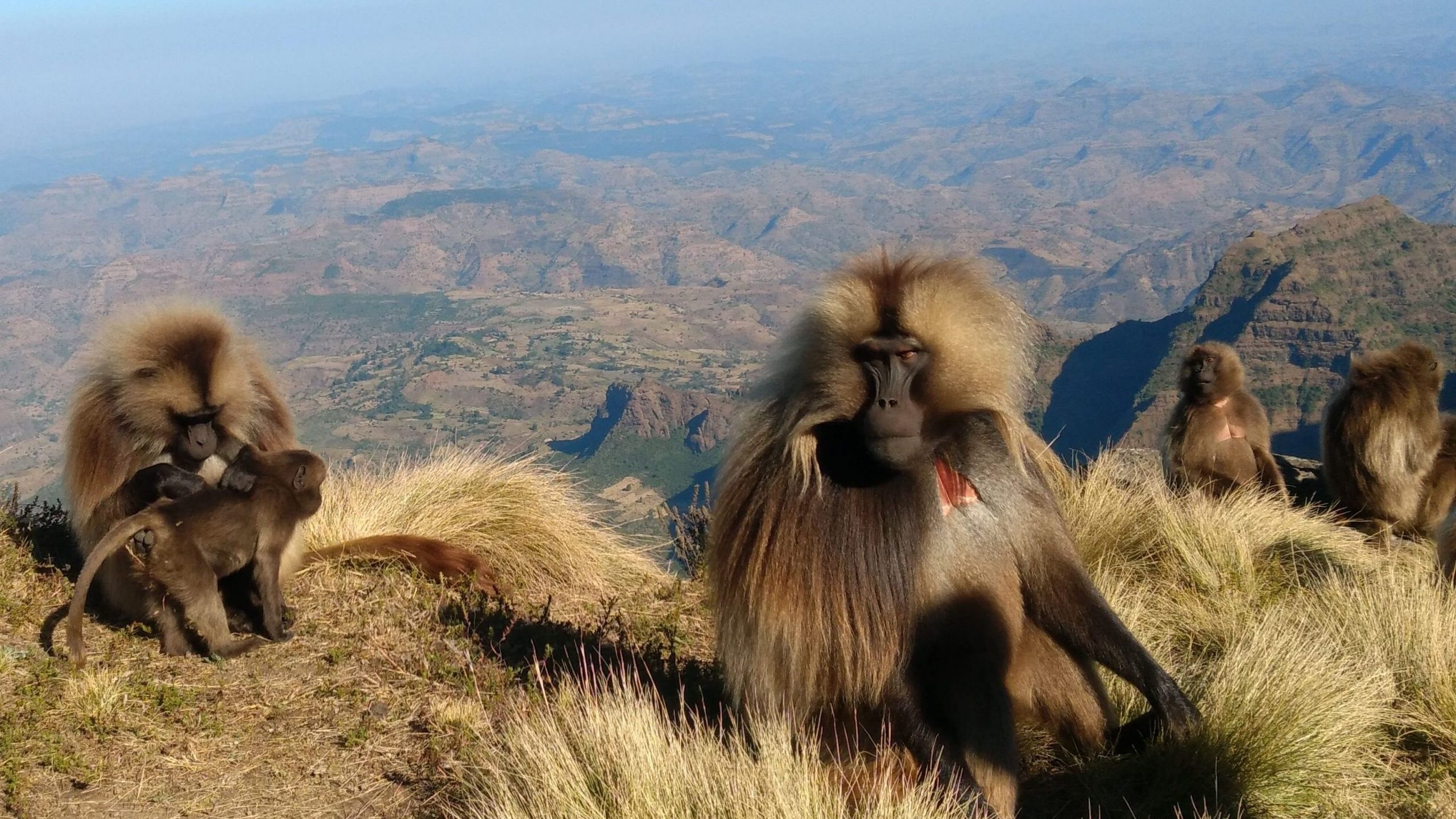Drs. Thore Bergman and Jacinta Beehner founded the Simien Mountains Gelada Research Project (formerly the University of Michigan Gelada Research Project) in 2005 to answer questions about what ecological and evolutionary drivers make geladas unique among primates in so many ways: why are geladas the last remaining species of their genus (Theropithecus)? Why do they live in groups that are an order of magnitude larger than almost every other primate? What function does the “bleeding heart” (red patch on their neck and chest) serve? How do they survive at high altitude and on an exclusively graminivorous diet?
Over the past nearly two decades, Ethiopian and American researchers have collected the long-term behavioral, ecological, and demographic data on a population of ~300 habituated (and named!) geladas that are necessary to answer these questions and generate new ones (see Research) about the evolution of sociality and its cognitive processes, the intersection between ecology and patterns of disease, the relationship between hormones and fitness, and genomic adaptations in a long-lived wild primate.
